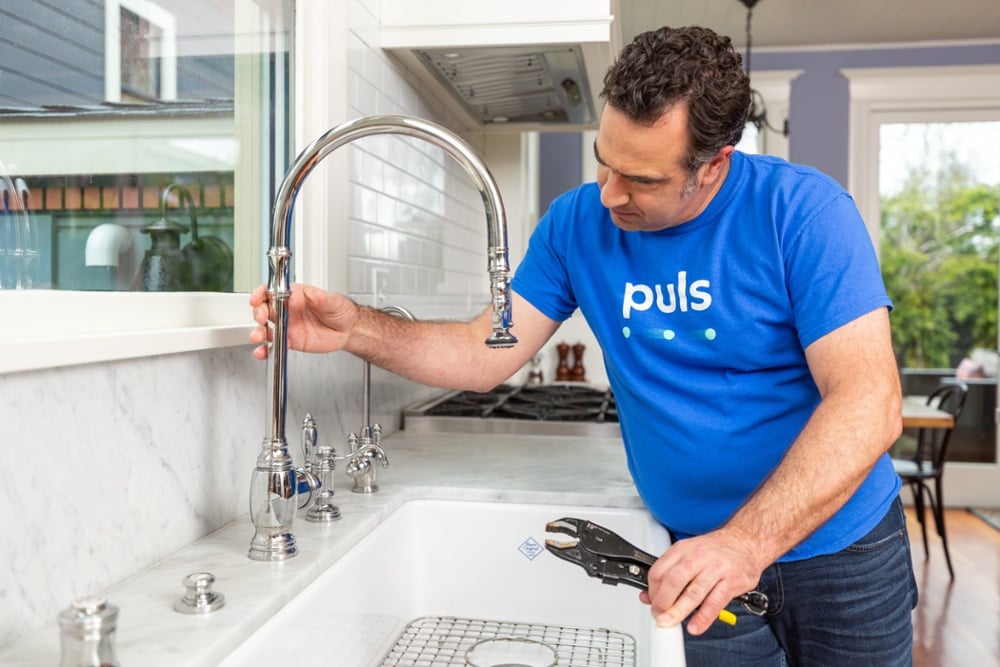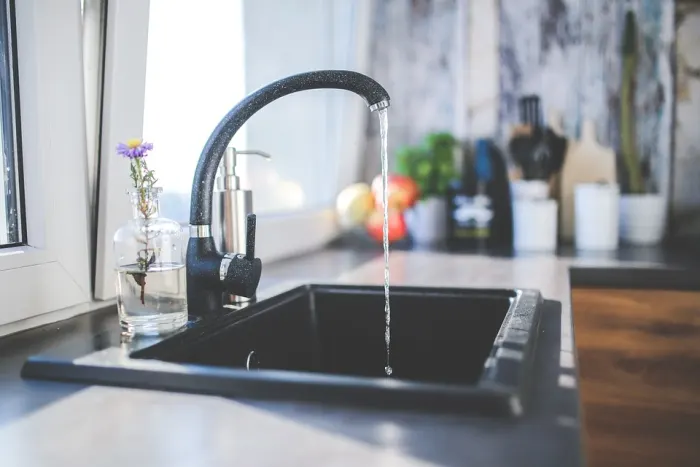Beyond DIY: Common Appliance Concerns Calling For an Expert Plumbing Professional
Beyond DIY: Common Appliance Concerns Calling For an Expert Plumbing Professional
Blog Article
We have come across this post relating to Why is My Home Making Strange Plumbing Noises down the page on the internet and accepted it made good sense to write about it with you here.

To identify loud plumbing, it is important to determine very first whether the undesirable audios occur on the system's inlet side-in other words, when water is transformed on-or on the drainpipe side. Sounds on the inlet side have varied causes: too much water pressure, worn valve as well as tap components, improperly linked pumps or various other devices, inaccurately placed pipe fasteners, as well as plumbing runs having way too many limited bends or various other restrictions. Noises on the drain side typically come from inadequate area or, similar to some inlet side sound, a layout containing tight bends.
Hissing
Hissing noise that happens when a faucet is opened somewhat normally signals too much water stress. Consult your neighborhood public utility if you believe this trouble; it will certainly have the ability to tell you the water pressure in your area and can install a pressurereducing valve on the incoming water supply pipe if necessary.
Other Inlet Side Noises
Creaking, squealing, damaging, breaking, and also touching normally are brought on by the growth or tightening of pipes, typically copper ones supplying hot water. The sounds take place as the pipelines slide versus loosened bolts or strike close-by home framing. You can frequently pinpoint the area of the trouble if the pipelines are subjected; just follow the sound when the pipes are making sounds. More than likely you will certainly find a loose pipe wall mount or a location where pipes lie so close to flooring joists or various other mounting items that they clatter versus them. Connecting foam pipe insulation around the pipes at the point of call must correct the problem. Be sure bands as well as hangers are safe and secure as well as offer ample assistance. Where possible, pipeline fasteners should be attached to substantial structural elements such as structure walls as opposed to to framing; doing so decreases the transmission of vibrations from plumbing to surfaces that can intensify and move them. If attaching bolts to framing is inescapable, wrap pipelines with insulation or other resistant material where they speak to fasteners, and also sandwich the ends of brand-new bolts between rubber washers when mounting them.
Fixing plumbing runs that deal with flow-restricting tight or many bends is a last resort that must be undertaken just after consulting a proficient plumbing contractor. Regrettably, this situation is relatively usual in older houses that may not have actually been built with interior plumbing or that have actually seen several remodels, particularly by beginners.
Chattering or Shrieking
Extreme chattering or screeching that happens when a shutoff or faucet is switched on, which generally disappears when the installation is opened totally, signals loose or faulty inner components. The solution is to replace the shutoff or tap with a new one.
Pumps as well as home appliances such as cleaning machines and dishwashing machines can move electric motor sound to pipes if they are incorrectly linked. Connect such things to plumbing with plastic or rubber hoses-never rigid pipe-to isolate them.
Drainpipe Sound
On the drainpipe side of plumbing, the principal objectives are to remove surfaces that can be struck by falling or rushing water as well as to shield pipelines to contain inevitable noises.
In brand-new building and construction, bath tubs, shower stalls, toilets, and wallmounted sinks as well as containers should be set on or against resilient underlayments to decrease the transmission of sound with them. Water-saving bathrooms as well as taps are much less loud than standard versions; mount them as opposed to older kinds even if codes in your location still allow making use of older components.
Drains that do not run up and down to the cellar or that branch right into straight pipeline runs sustained at flooring joists or various other mounting existing specifically troublesome noise problems. Such pipelines are big sufficient to emit substantial resonance; they additionally carry significant amounts of water, which makes the circumstance even worse. In brand-new building and construction, define cast-iron dirt pipelines (the huge pipelines that drain toilets) if you can afford them. Their massiveness includes much of the noise made by water going through them. Likewise, prevent directing drains in wall surfaces shown bedrooms and rooms where people gather. Walls containing drains need to be soundproofed as was defined previously, making use of double panels of sound-insulating fiber board and also wallboard. Pipelines themselves can be wrapped with special fiberglass insulation made for the purpose; such pipes have an impervious vinyl skin (often including lead). Results are not always satisfactory.
Thudding
Thudding noise, often accompanied by shivering pipelines, when a tap or home appliance valve is turned off is a condition called water hammer. The sound and also resonance are triggered by the reverberating wave of stress in the water, which unexpectedly has no place to go. Occasionally opening up a valve that releases water rapidly into a section of piping having a limitation, elbow joint, or tee installation can produce the same problem.
Water hammer can normally be cured by installing installations called air chambers or shock absorbers in the plumbing to which the problem shutoffs or taps are connected. These tools permit the shock wave produced by the halted circulation of water to dissipate in the air they have, which (unlike water) is compressible.
Older plumbing systems might have short upright sections of capped pipeline behind walls on tap runs for the very same function; these can at some point loaded with water, minimizing or ruining their effectiveness. The treatment is to drain the water supply totally by shutting off the major water system valve and also opening all taps. Then open the primary supply valve and also close the taps one by one, beginning with the faucet nearest the valve as well as ending with the one farthest away.
WHY IS MY PLUMBING MAKING SO MUCH NOISE?
This noise indeed sounds like someone is banging a hammer against your pipes! It happens when a faucet is opened, allowed to run for a bit, then quickly shut — causing the rushing water to slam against the shut-off valve.
To remedy this, you’ll need to check and refill your air chamber. Air chambers are filled with — you guessed it — air and help absorb the shock of moving water (that comes to a sudden stop). Over time, these chambers can fill with water, making them less effective.
You’ll want to turn off your home’s water supply, then open ALL faucets (from the bathroom sink to outdoor hose bib) to drain your pipes. Then, turn the water back on and hopefully the noise stops! If you’re still hearing the sound, give us a call to examine further.
Whistles
Whistling sounds can be frustrating, as sometimes the source isn’t easily identified. However, if you can pinpoint which faucet or valve that may be the cause, you’ll likely encounter a worn gasket or washer — an easy fix if you replace the worn parts!Whistling sounds from elsewhere can mean a number of things — from high water pressure to mineral deposits. Your best plan of attack here is to give our plumbing experts a call. We’ll be able to determine where the noise is coming from and what the cause may be, then recommend an effective fix!
Cracks or Ticks
Cracking or ticking typically comes from hot water going through cold, copper pipes. This causes the copper to expand resulting in a cracking or ticking sound. Once the pipes stop expanding, the noise should stop as well.
Pro tip: you may want to lower the temperature of your water heater to see if that helps lessen the sound, or wrapping the pipe in insulation can also help muffle the noise.
Bangs
Bangs typically come from water pressure that’s too high. To test for high water pressure, get a pressure gauge and attach it to your faucet. Water pressure should be no higher than 80 psi (pounds per square inch) and also no lower than 40 psi. If you find a number greater than 80 psi, then you’ve found your problem!
Next step is to give us a call in order to install a pressure regulator. Trust us, you don’t want to wait to resolve this issue. Not only is the sound annoying, but high water pressure can be destructive to your home — including damaging certain appliances, like your washer and dishwasher.
Dripping
You might be accustom to the slow quiet drip your kitchen faucet makes. You might have even tuned out your bathroom sink dripping and drabbing all day long — but it’s time to find its cause.
A slow drip could signify a variety of easy to fix issues, such as a worn out O ring, or loose part. And by ignoring the drip, you could be wasting up to 2,000 gallons of water a year! So start conserving water — get it looked at ASAP.
https://www.pwessig.com/blog/2018/december/why-is-my-plumbing-making-so-much-noise-/

Hopefully you enjoyed reading our topic on Why Your Water Pipes Are Noisy and How To Shut Them Up. Thanks a lot for taking a few minutes to browse our short article. Are you aware of somebody who is inquisitive about the topic? Be sure promote it. I enjoy reading our article about How To Fix Noisy Pipes.
Source This Article Report this page